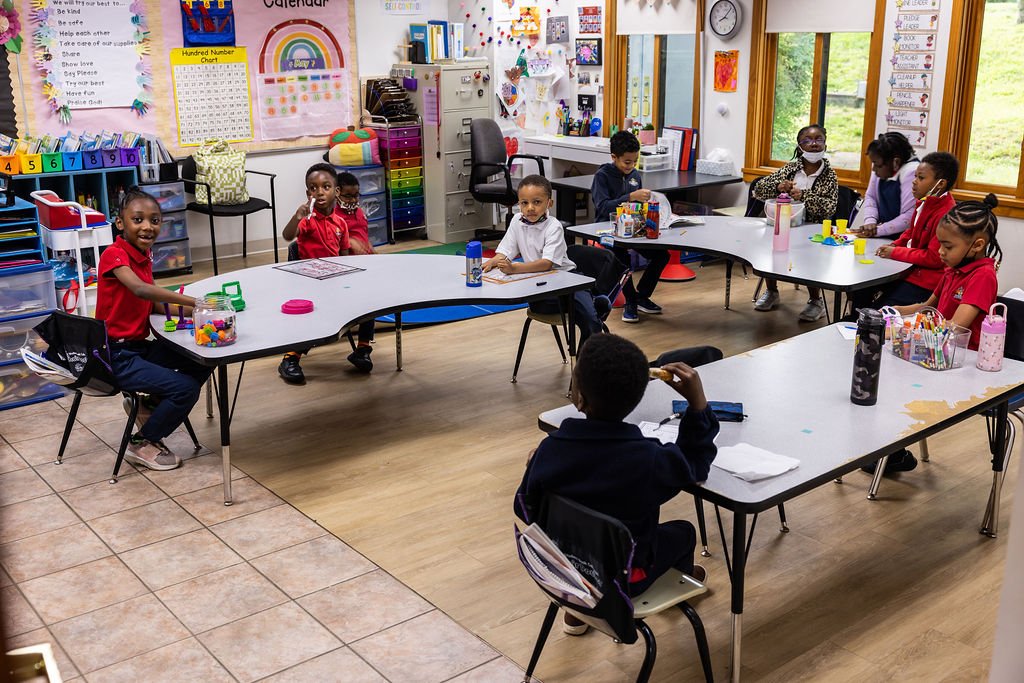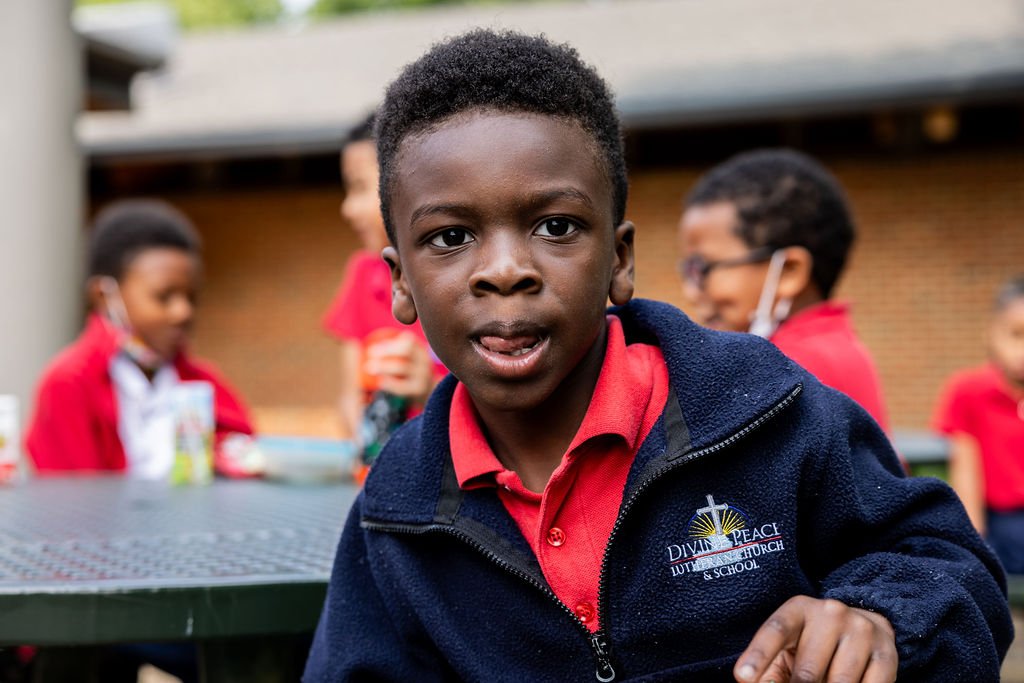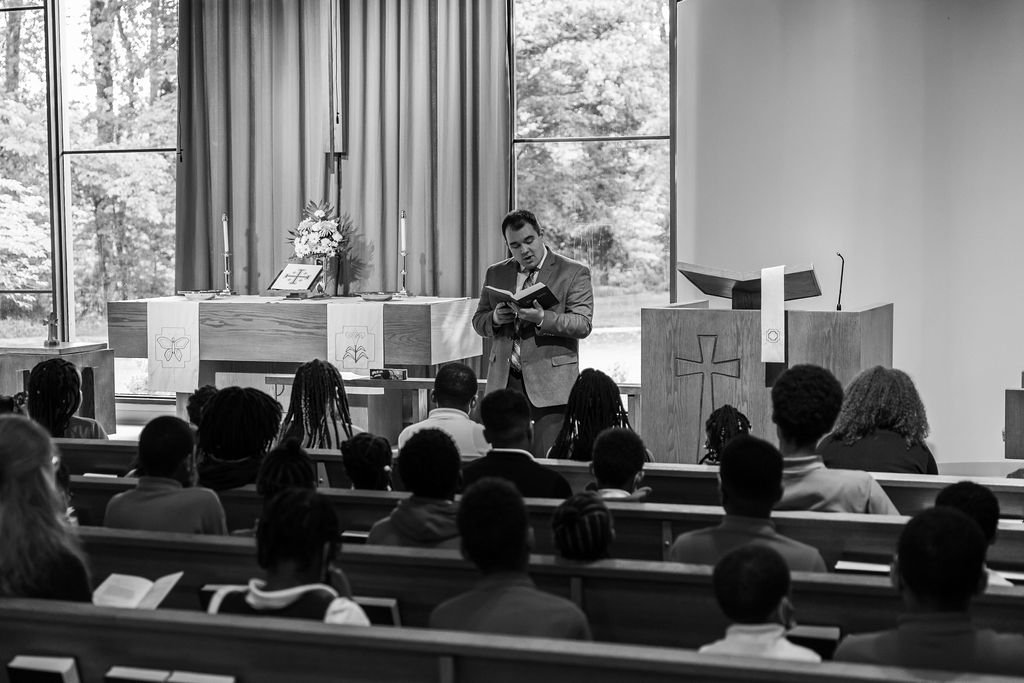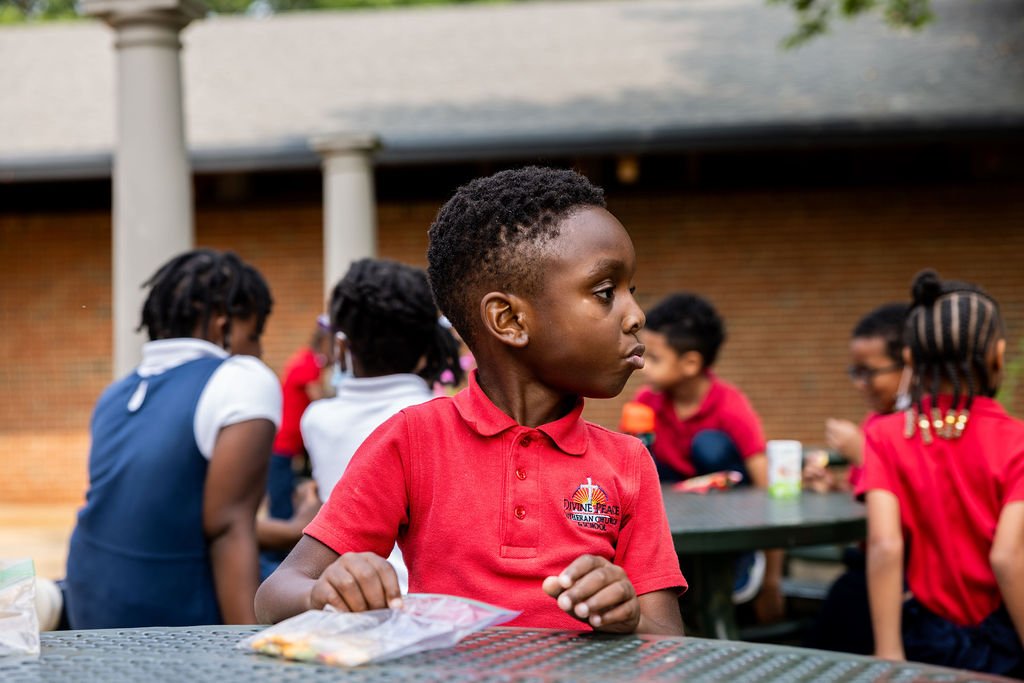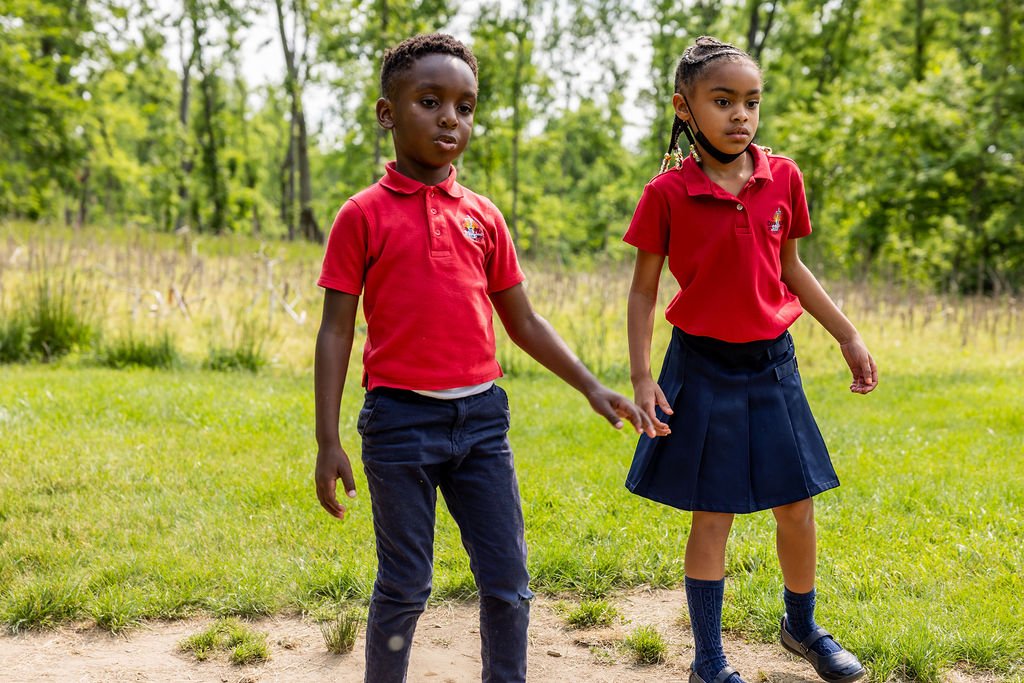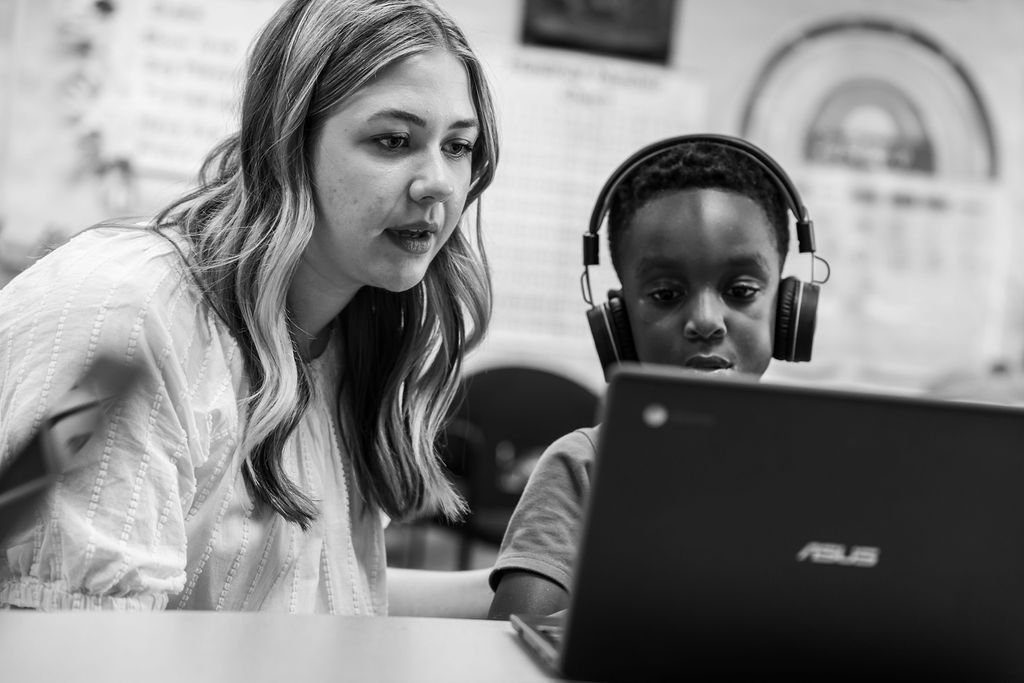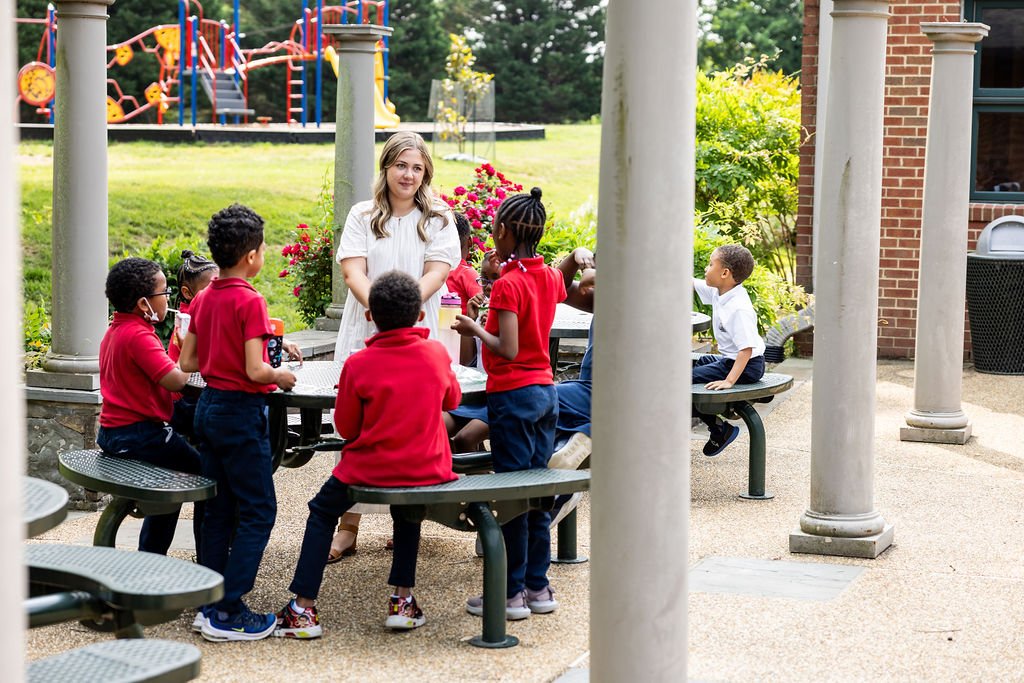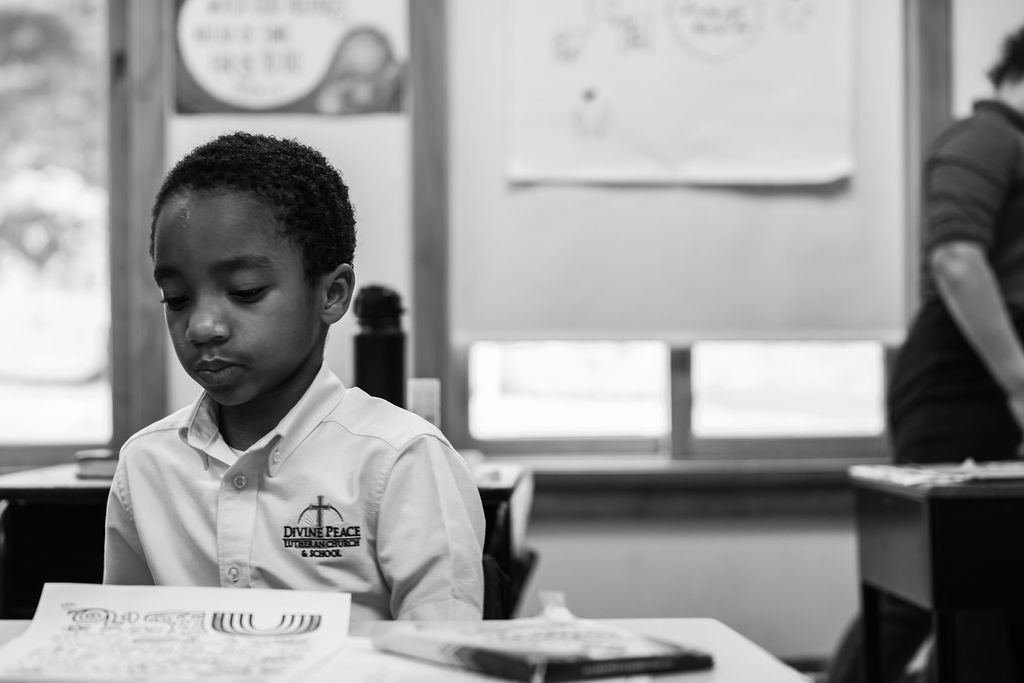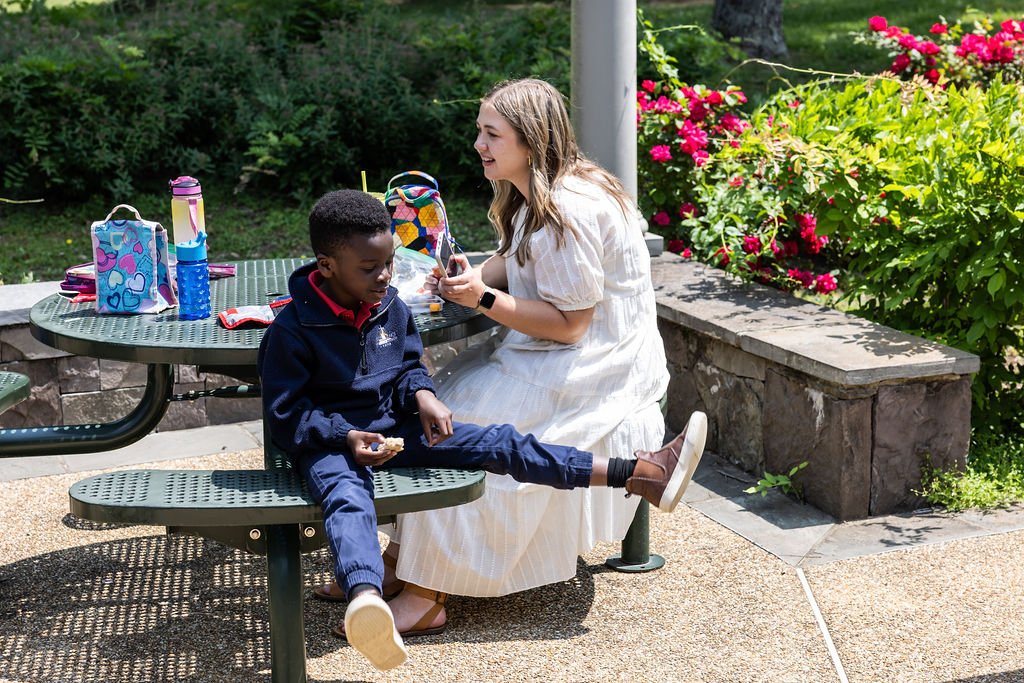Kindergarten - 2nd Grade
Our K-2 classroom combines structured educational time and unstructured play to achieve maximum learning for each child. In addition, the classroom teaches and fosters respectful and courteous peer interaction, socialization in multiple environments, and self-discipline for effective time management. We have a well-rounded curriculum that creates a solid foundation for lifelong learning. All subjects are taught in the light of God’s Word to ensure a Biblical view of the world.
Our classroom includes learning centers focused on fine motor skills, art, science, math, phonics, and more. Chromebooks are used to enhance our language arts, science, and math curriculum. Physical education, music, and art are each taught once a week.
CURRICULUM
Language Arts: We combine the best of balanced literacy and structured literacy to create excitement for and love of language in students. We use large group read-alouds, small guided reading groups, explicit and systematic phonics instruction, practice and recognition of high-frequency words, and independent reading practice. Not only do students learn to read, but they also learn strategies for decoding new, unfamiliar words, as well as how to use the text to support their understanding. In addition, students work on word patterns and vocabulary in spelling. These skills and procedures carry over into daily writing practice. Students are instructed in and practice handwriting in the Zaner-Bloser style. Work in reading, writing, and grammar are carried out using the Super Kids series.
Math: Using manipulatives and other hands-on activities, students are introduced to, learn, practice, and begin to understand various mathematical concepts. Kindergarten concepts include sorting, shapes, solids, patterns, position, numbers and number patterns to 100, addition, subtraction, money, time, measurement, graphs, and fractions. Grade 1 concepts include numbers, number words, ordinals, addition and subtraction, graphing, place value, shapes, and transformation, money, time, measurement, fractions, and probability. Students solve word problems and simple equations. Our classrooms use Sadlier-Oxford Progress in Mathematics.
Social Studies: Interactive activities and explicit instruction help students learn about, make connections to, and understand how communities are formed and function. Topics introduced and studied are our school community and students’ neighborhoods, as well as different types of communities, community laws, and leaders, jobs and occupations, weather and seasons, natural resources, comparing past and present, indigenous peoples, symbols in our country, holidays, and places in the world. In addition, students practice various skills in reading, understanding and using a map and the globe, reading and interpreting charts and graphs, and thinking. Scott Foresman Social Studies All Together serves as a guide to classroom instruction.
Science: Using explicit instruction along with experimentation and hands-on labs, students will explore, connect to, and learn about how scientists work, using the five senses, the various uses of technology all around us, problem-solving, plants and animals, different environments, Earth’s resources, weather and seasons, objects in the sky, matter, forces, energy, and movement. Our classrooms use Houghton Mifflin Harcourt Science Fusion.
Word of God: Using the Bible and Concordia’s One in Christ curriculum, students learn how God created the world and each person, and above all, how God promised and provided a Savior from sin, and how God continues to care for His people today and through eternity. Students are introduced to and learn about the Triune God, the life of Jesus, the redeeming work of Christ, His resurrection from the dead, and the eternal blessings received through faith in Christ. Students also learn songs and hymns that teach Biblical truths and memorize portions of Scripture to build and encourage them in their walk of faith and in their life.

